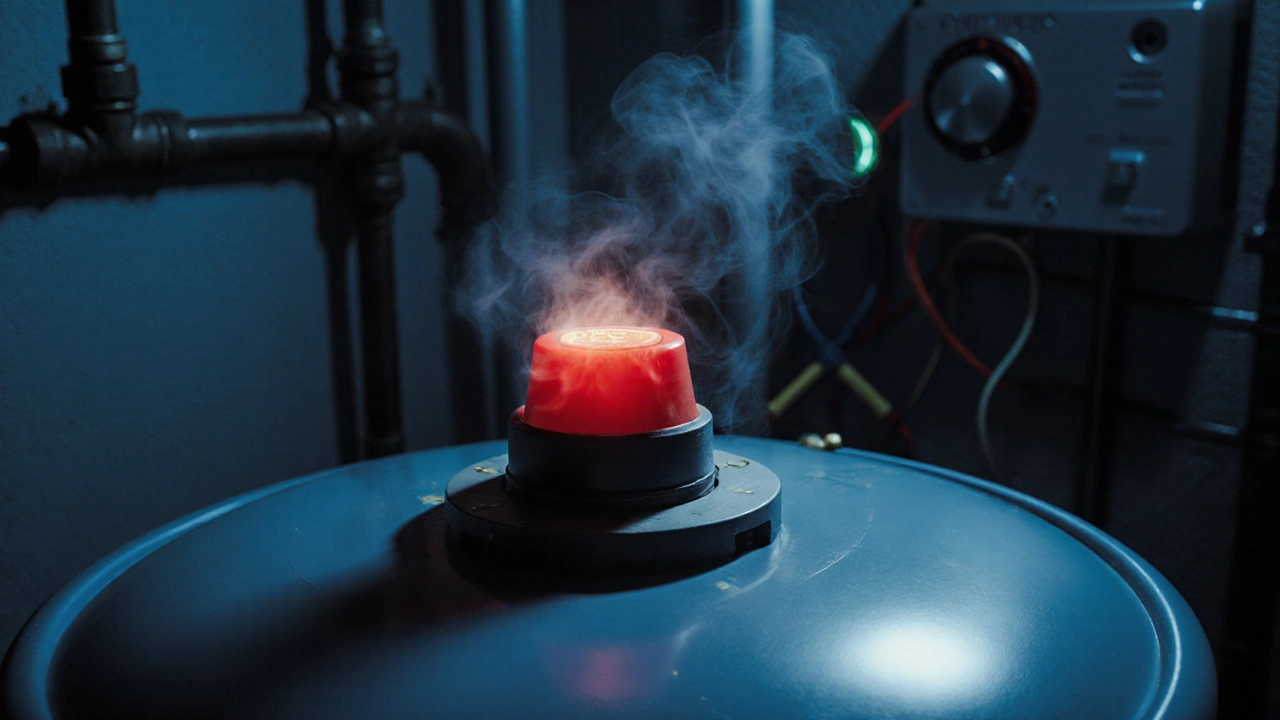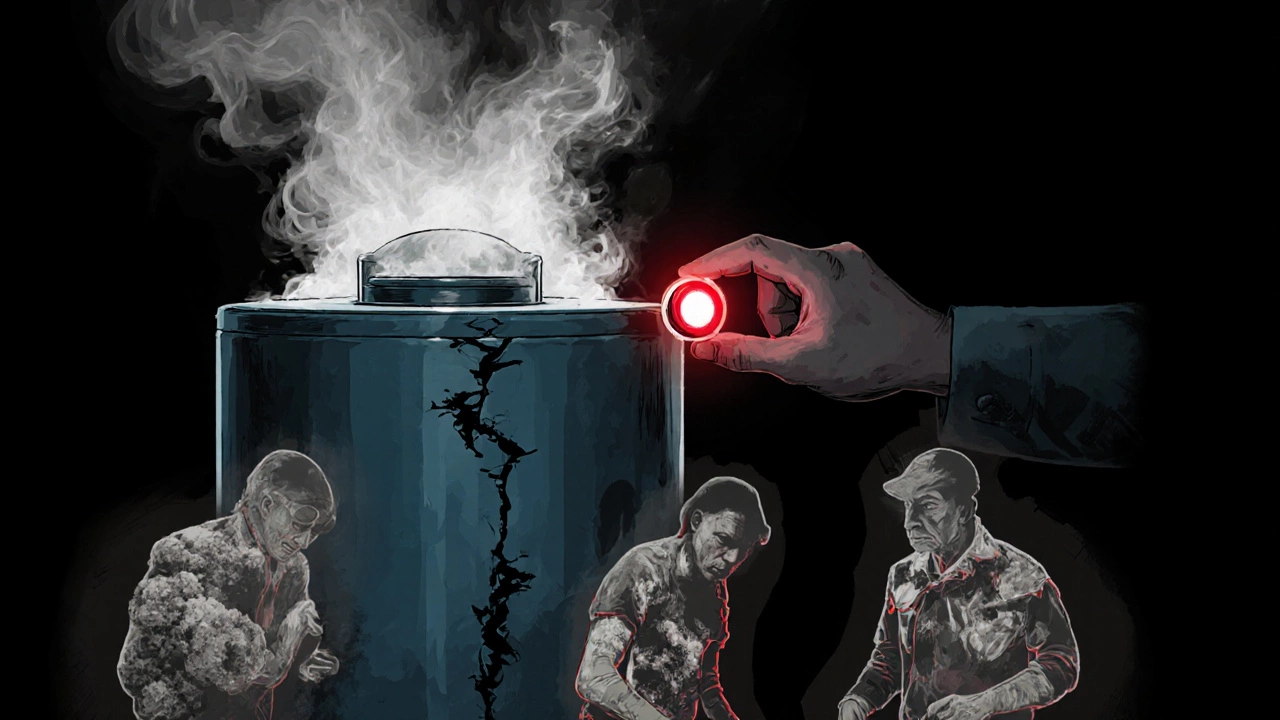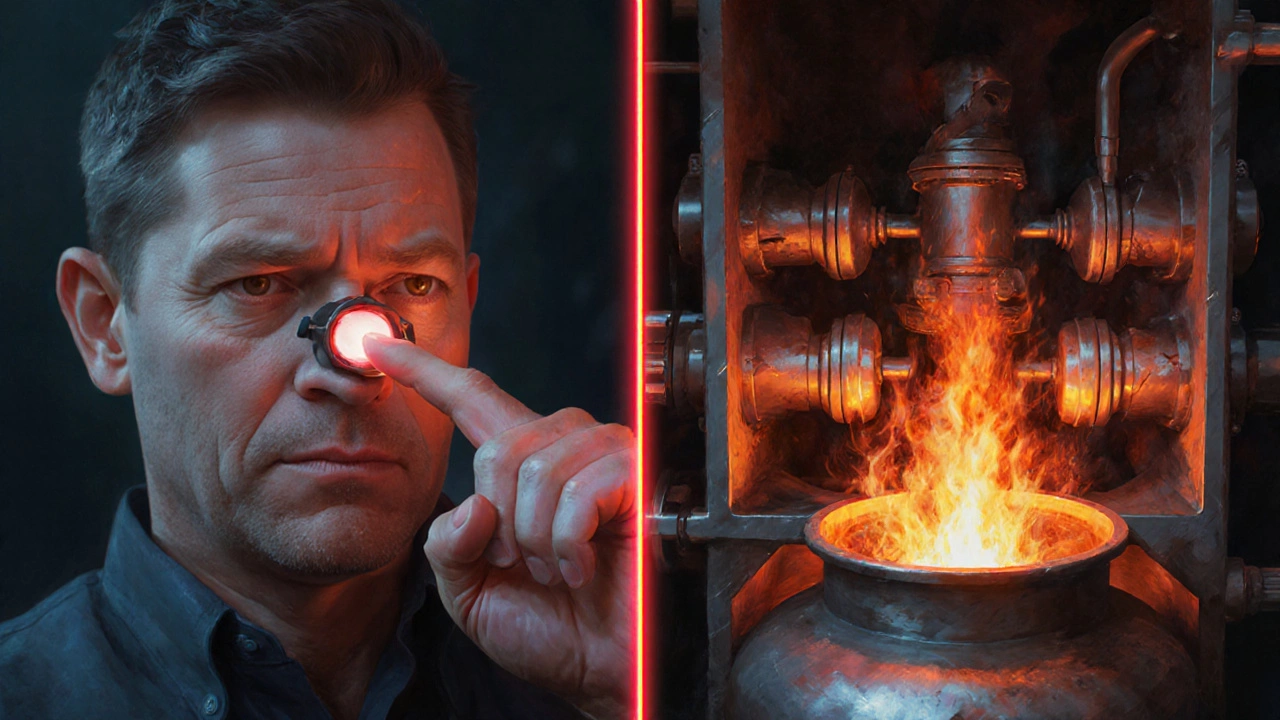
- 16 Nov 2025
- Gideon Thornton
- 0
Water Heater Reset Button Safety Checker
Is it safe to press the reset button?
This tool helps you determine if pressing your water heater's reset button is safe based on your specific situation.
It's safe to press the reset button
Press the button once after waiting 10 minutes if you experienced a power outage, or after fixing known issues. Always check for underlying problems.
Do NOT press the reset button
Repeated tripping indicates a serious issue. Pressing the reset button without fixing the root cause can cause:
- Heating element damage
- Warped tank lining
- Electrical fires
- Complete safety system failure
Call a licensed plumber immediately for diagnosis.
Ever heard that loud click when you press the reset button on your water heater? Maybe your hot water suddenly went cold, and you saw that little red button sticking out. You thought, “If I just push it back in, it’ll fix itself.” It’s tempting. But is it safe? The answer isn’t yes or no-it’s “it depends.”
What the reset button actually does
The reset button on your water heater isn’t a power switch. It’s a safety device called a high-limit switch. It’s designed to shut off power if the water inside gets dangerously hot-usually above 180°F (82°C). This prevents scalding, tank damage, or even explosions in extreme cases. When the temperature spikes, the switch trips open, cutting electricity to the heating elements. That’s why your water stops getting hot.
That red button is your last line of defense. It’s not meant to be pressed every time you run out of hot water. It’s meant to be pressed only after you’ve figured out why it tripped in the first place.
Why the reset button trips
Pressing the button without knowing the cause is like ignoring a car’s check engine light and just turning it off. You might get moving again-but something’s broken.
Here are the most common reasons the reset button pops:
- A faulty thermostat that keeps the heating element on too long
- A broken heating element that’s stuck in “on” mode
- Mineral buildup around the elements causing overheating
- Loose or corroded wiring creating resistance and heat
- A defective high-limit switch itself (less common)
If you’ve got an electric water heater, the reset button usually sits on top of the upper thermostat. For gas heaters, the reset is often on the gas control valve. Either way, if it trips more than once or twice in a few months, something’s wrong.
When it’s safe to press the reset button
There are two real situations where pressing the reset button is okay:
- After a power outage or surge. Sometimes, a sudden spike in electricity can trick the system into thinking it’s overheating. Wait 10 minutes after power returns, then press the button once.
- After flushing the tank and fixing a known issue. If you’ve drained sediment, replaced a bad thermostat, or fixed a wiring problem, then resetting is the final step to restore normal operation.
That’s it. No other circumstances justify pressing it. If you’re just trying to get hot water back quickly and don’t know why it stopped, don’t press it. You’re not fixing anything-you’re hiding the problem.

What happens if you press it too often
Repeatedly pressing the reset button without fixing the root cause can lead to:
- Damage to the heating elements from constant overheating cycles
- Warped or cracked tank lining from thermal stress
- Blown fuses or tripped breakers from electrical overload
- Complete failure of the high-limit switch, leaving you without safety protection
One study from the American Society of Plumbing Engineers found that 68% of water heater failures in homes under 10 years old were linked to repeated reset button use without diagnosis. The fix? Often, a $50 thermostat replacement. The cost of ignoring it? A new $1,200 water heater.
What to do instead
When your reset button pops, follow this simple 3-step process:
- Turn off power. Flip the breaker for the water heater. Safety first.
- Check the temperature. Let the water cool for an hour. Then test the water at a faucet. If it’s still scalding hot, the thermostat is likely stuck.
- Inspect for visible damage. Look for rust, leaks, or burnt wires near the thermostats or elements. Smell for burning plastic-that’s a red flag.
If you’re not comfortable doing this, call a licensed plumber. Most will come out for a diagnostic fee of $75-$125, which is often waived if you hire them for the repair.

Signs you need professional help
Don’t wait until your water heater bursts. Call a pro if you see:
- The reset button trips more than twice in 3 months
- You hear popping or rumbling noises from the tank
- Water is discolored or smells like rotten eggs
- There’s water pooling around the base of the unit
- The heater is over 10 years old and keeps tripping
Age matters. Water heaters last 8-12 years on average. If yours is near that range and starting to act up, replacement is smarter than endless resets.
Preventing future trips
Once you fix the issue, here’s how to keep the reset button from popping again:
- Set your thermostat to 120°F (49°C). That’s hot enough for showers, safe for kids, and reduces mineral buildup.
- Flush your tank every 6-12 months. Sediment is the #1 cause of overheating.
- Install a water softener if you have hard water. Minerals coat elements and cause them to overwork.
- Check your circuit breaker annually. A loose connection can cause intermittent power spikes.
These simple habits can double the life of your water heater and save you hundreds in repair bills.
Final word: Don’t treat it like a light switch
The reset button on your water heater is not a magic fix. It’s a warning sign. Pressing it without understanding why it tripped is like ignoring a smoke alarm because you don’t like the noise. It’s not reckless-it’s dangerous.
Yes, sometimes a single press will restore hot water. But if it happens again next week, you’re not lucky-you’re just delaying the inevitable. Fix the problem. Don’t just reset it.
Can pressing the reset button cause a fire?
Yes, if the underlying issue isn’t fixed. A faulty thermostat or damaged heating element can overheat the tank, melt insulation, or ignite nearby materials. The reset button is a safety feature designed to prevent this-but repeatedly overriding it removes that protection.
Why does my water heater reset button keep popping?
It keeps popping because something is causing the water to overheat. Most often, it’s a failed thermostat, a broken heating element, or heavy mineral buildup. The reset button is doing its job-it’s telling you there’s a problem that needs fixing.
Is it normal for the reset button to trip once a year?
No. If it trips even once, you should investigate why. A single trip could be a power surge, but it could also be the start of a serious issue. Don’t assume it’s normal. Check the thermostat settings and flush the tank. If it happens again, call a plumber.
Can I bypass the reset button?
Never. Bypassing the reset button removes a critical safety feature. It’s against electrical code in most areas and can void your home insurance. Even if you think you know what you’re doing, the risk of scalding or tank rupture is too high.
How long should I wait before pressing the reset button?
Wait at least 30 minutes after turning off the power. This lets the tank cool down and prevents thermal shock to the heating elements. If you press it too soon, you risk damaging the thermostat or causing the switch to trip again immediately.




